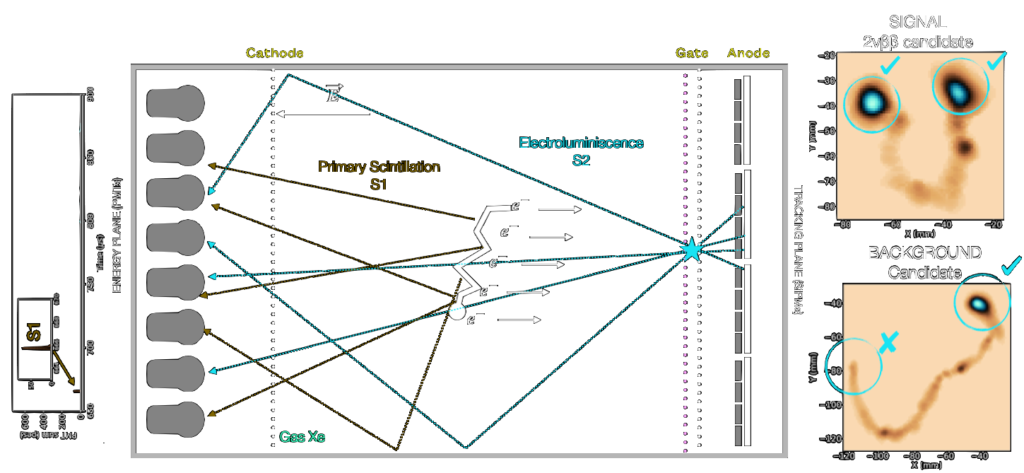
In order for NEXT to be competitive with the new generation of ββ0ν experiments already in operation or in construction, we need a detector with very good energy resolution (< 1%), very low background contamination (~ 10-4 counts/(keV kg y)) and large target mass. In addition, it needs to be operational as soon as possible.
The NEXT design optimizes energy resolution thanks to the use of proportional electroluminescent amplification (EL), which provides a large yield of photons as a signal. It is compact, as the Xe gas is under high pressure and it allows the measurement of the topological signature of the event to further reduce the background contamination. The two electrons of 0νββ leave a track with almost constant energy deposition and two big “blobs” of energy at the ends, caused by the higher energy deposition per unit length that the electrons leaves when they have low energy left. On the contrary, background is constituted by single electrons, which present only one “blob” at one end.
The SOFT (Separated Optimized FuncTion) design takes advantage of different sensors for tracking and calorimetry. On the tracking side, we make use of SiPMs coated with a suitable wavelength shifter, while radiopure photomultipliers are used for the measurement of the energy and the primary scintillation needed to estimate the t0.
An event generates primary scintillation recorded at both planes (this is called the S1 signal, following the slang used by the experiments searching for direct detection of Dark Matter). EL light generated at the anode (S2) is recorded in the SiPMs plane right behind it and used for tracking. It is also recorded in the photosensor plane behind the transparent cathode and used for a precise energy measurement.
NEXT working principle

An intense R&D program was carried out by the Collaboration. The feasibility of the technology was demonstrated with the NEXT prototypes which showed the excellent performance (energy resolution, electron reconstruction) of the apparatus, as well as the robustness of the EL technology. The NEXT-White detector (the name honours the memory of Professor James White, who was one of the key scientists of the NEXT Collaboration) constituted the first-phase within the NEXT program. It operated at the Underground Canfranc Laboratory (LSC) between 2016 and 2021, with the double target of assessing the NEXT background model from the data themselves, and measuring the mode with two neutrinos double beta decay, (demonstrating the unique NEXT topological signal).
